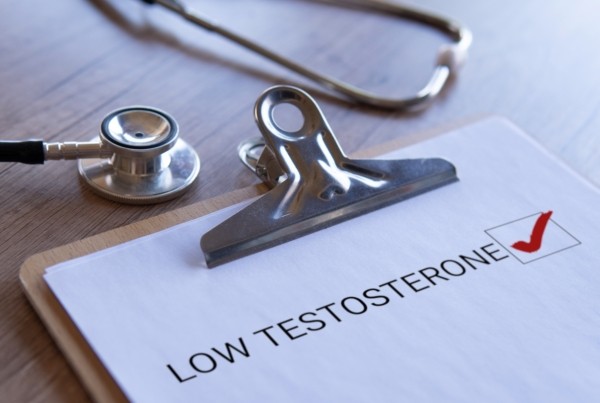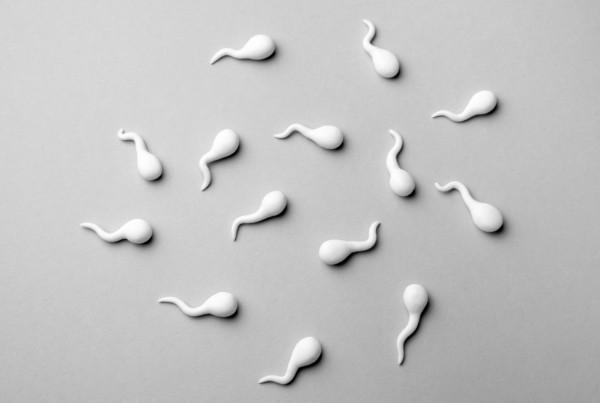“Male Infertility Crisis In US Has Experts Baffled” cried a recent Newsweek magazine article. The headline of an article in the Guardian, a newspaper from the UK, said, “The Infertility Crisis is Beyond Doubt. Now Scientists Must Find A Cause.” It’s no wonder, then, that people have started asking the question: “Will male infertility doom mankind?”
Don’t Panic
Before we start pushing the panic button, let’s take a look at the facts, away from the emotional headlines. It is true that male fertility has decreased over the last 40 years and continues to drop at the rate of 1.4% per year, according to a study by the Hebrew University of Jerusalem. But, it is also true that it still only takes one sperm to fertilize an egg and even with the decrease in sperm production over the last 40 years, men are still producing millions of swimmers. With all those millions swimming towards the egg, the chances are still very good that one of those will hit the mark and result in a pregnancy.
Historically, concerns and the focus on infertility were pointed towards women. However, in reality, infertility is an equally shared problem. Studies show that the causes of infertility are equally distributed between men and women, with 35% of infertility cases caused by the woman, and 35% caused by the man; the remaining 30% can be a shared issue, not explained medically, or due to illness or genetics. Infertility can even result when one of the partners is exposed to harmful chemicals.
So, what is causing this increase?
Scientists seem to be having a difficult time pinpointing exactly why male infertility rates are decreasing. The frustration of the experts was succinctly addressed by Professor Richard Sharpe, from Edinburgh University, when he said,
“The end of humanity is not approaching … We have no treatments for improving sperm production in infertile men, and we have no idea about what is the cause of the condition. We cannot remedy it. So we are completely hamstrung.”
Other experts are looking in other directions for the cause. They cite factors such as:
- Increased obesity in Western countries
- An increase in the number of men with type 2 diabetes (with or without obesity)
- Heavy alcohol/drug use
- Cigarette smoking
- Medications
Is Mankind Doomed?
The good news is that humankind is not doomed to fade into Earth’s history books. Fortunately, technological and medical advances have come a long way since the time when in vitro fertilization was first introduced. The result is that today many more couples can become parents who would not have had that option 40 years ago. For men, options such as ICSI are readily available and doctors are more prone to move to this solution when the man’s sperm analysis points directly to a significant male issue that cannot be solved in other ways.
Early Diagnosis is Key
The fact remains that early diagnosis of a fertility issue is a key factor towards successful intervention. As BOTH men and women age, conceiving a child becomes a greater challenge. Women have a biological clock ticking away as their eggs age and, surprising to many, a man’s fertility also declines with age, particularly after age 45.
Knowing that age impacts fertility for both a woman and a man, and that couples are waiting to start families globally, early diagnosis of a problem is key, particularly if the medical protocol is to wait 1 year before initiating medical intervention. Women have home ovulation test kits to track their cycle to optimize timing of intercourse during her optimal fertile time.
Now, finally, men have home sperm tests available for early screening. Since a sperm analysis is the first investigative test a physician will run, these home tests can provide information early, particularly if the home test looks at MOVING sperm. The downside of some tests is that they just evaluate the NUMBER of sperm, even counting dead ones. Some couples begin their conception journey by testing their fertility potential at home together and then seeking medical intervention if the results of the home tests are not optimal.
So, although male sperm counts have dropped significantly over the last 40 years, there is definite hope ahead with early detection options and medical interventions that were not available 40 years ago, or even 10 years ago. The result is that many couples are now parents who would not have had this opportunity in the past. While male infertility may be on the increase, as you can see, there is no reason for panic, just early diagnosis and treatment.







